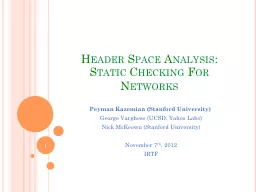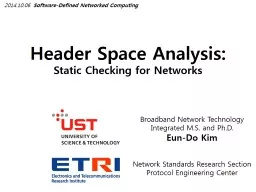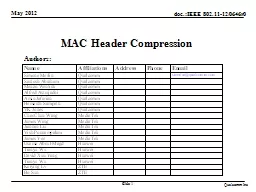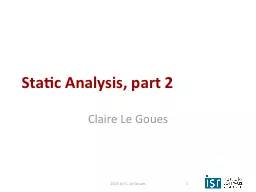PPT-Header Space Analysis: Static Checking For Networks
Author : phoebe-click | Published Date : 2017-12-28
Peyman Kazemian Stanford University George Varghese UCSD Yahoo Labs Nick McKeown Stanford University November 7 th 2012 IRTF 1 Motivation It is hard to understand
Presentation Embed Code
Download Presentation
Download Presentation The PPT/PDF document "Header Space Analysis: Static Checking F..." is the property of its rightful owner. Permission is granted to download and print the materials on this website for personal, non-commercial use only, and to display it on your personal computer provided you do not modify the materials and that you retain all copyright notices contained in the materials. By downloading content from our website, you accept the terms of this agreement.
Header Space Analysis: Static Checking For Networks: Transcript
Download Rules Of Document
"Header Space Analysis: Static Checking For Networks"The content belongs to its owner. You may download and print it for personal use, without modification, and keep all copyright notices. By downloading, you agree to these terms.
Related Documents














